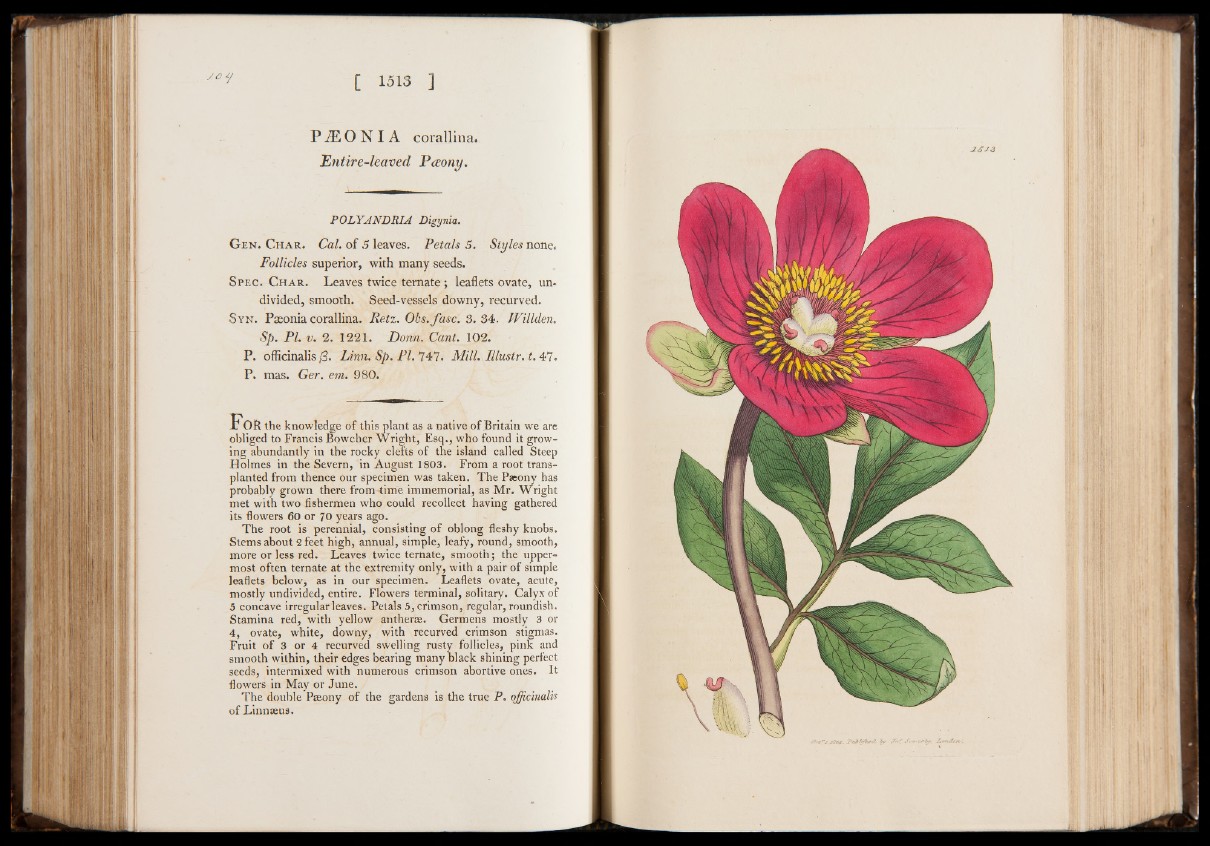
P iE O N IA corallina.
Entire-leaved Fceony.
POLYANDRIA Digynia.
Gen. Char. Cal. of 5 leaves. Petals 5 . Styles none.
Follicles superior, with many seeds.
Spec. Char. Leaves twice temate; leaflets ovate, undivided,
smooth. Seed-vessels downy, recurved.
Syn. Paeonia corallina. Retz. Obs.fasc. 3. 8 4 . Willden.
Sp. PI. v. 2. 1221. Donn. Cant. 102.
P. officinalis (2. Linn. Sp. PI. 747. Mill. Illustr. t. 47.
P. mas. Ger. em. 980.
F o r the knowledge of this plant as a native of Britain we are
obliged to Francis Bowcher Wright, Esq., who found it growing
abundantly in the rocky clefts of the island called Steep
Holmes in the Severn, in August J803. From a root transplanted
from thence our specimen was taken. The Paeon y has
probably grown there from time immemorial, as Mr. Wright
met with two fishermen who could recollect having gathered
its flowers 60 or 70 years ago.
The root is perennial, consisting of oblong fleshy knobs.
Stems about 2 feet high, annual, simple, leafy, round, smooth,
more or less red. Leaves twice ternate, smooth; the uppermost
often ternate at the extremity only, with a pair of simple
leaflets below, as in our specimen. Leaflets ovate, acute,
mostly undivided, entire. Flowers terminal, solitary. Calyx of
5 concave irregular leaves. Petals 5, crimson, regular, roundish.
Stamina red, with yellow antherae. Germens mostly 3 or
4, ovate, white, downy, with recurved crimson stigmas.
Fruit of 3 or 4 recurved swelling rusty follicles, pink and
smooth within, their edges bearing many black shining perfect
seeds, intermixed with numerous crimson abortive ones. It
flowers in May or June.
The double Paeony of the gardens is the true P . officinalis
of Linnaeus.
Z S Z 3
2>y <75'”' JV»